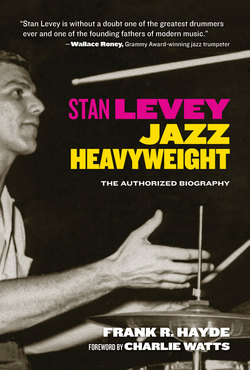Читать книгу Stan Levey - Frank R. Hayde - Страница 7
На сайте Литреса книга снята с продажи.
ОглавлениеINTRODUCTION
by CHARLIE WATTS of the Rolling Stones
The first time I heard of Stan Levey was when I was about fifteen years old and I was collecting all the Charlie Parker stuff. The band that Dizzy Gillespie took to Los Angeles in about 1946—an amazing band—Stan was in that band. Stan was one of the original bebop players from this very innovative period when they completely changed playing. To hold down the drum chair with Dizzy and Parker is something else.
Stan could hold a tempo that was unbelievable. It’s very difficult to play fast and keep on top of it. Really difficult. It takes a whole sort of athleticism. You have to jump—be on top of every beat—hold a tempo on top of a tempo. Stan was a master of that. The other thing with Stan is he was a very good boxer. That’s what I think kept him in great shape for that sort of thing.
He moved to Hollywood and was playing what’s called West Coast jazz. Those are my favorite records of Stan, that stuff from Contemporary Records, which had a yellow record label, and Bethlehem Records. For me as a young sixteen- or eighteen-year-old in London, buying records and trying to learn how to play, Stan was synonymous with the West Coast school. To see them all playing live, these jazz musicians in the 1950s, must have been unbelievably fantastic. One of the bands Stan played in that gave him terrific notoriety was the Stan Kenton band.
I think this is a piece of jazz history that’s very important to document. Stan is a link. His life is an amazing story and he was a lovely man. I was totally in awe of meeting him and the legacy that he carries.
